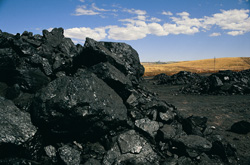From coal to hydrogen for ‘green’ electricity
Coal is abundant in many countries and is used to produce electricity through a process known as the integrated gasification combined cycle (IGCC). Although IGCC is efficient, coal combustion accounts for approximately a third of man-made carbon dioxide (CO2) emissions and faces numerous technical difficulties related to corrosion, pollutants and deposits. The ‘Innovative in situ CO2 capture technology for solid fuel gasification’ (ISCC) project set out to develop technology for using low-grade brown coal in a gasification process that simultaneously produces hydrogen-rich gas and enables efficient capture and sequestration of CO2, the so-called In Situ CO2 Capture (ISCC) technology. The researchers based their experiments on the lime-enhanced gasification (LEGS) process. LEGS uses a gasifier to produce a hydrogen-rich gas from brown coal via high-temperature CO2 absorption by lime (CaO), the sorbent material. In order to regenerate the lime, the CO2-laden sorbent is passed through a second reactor, a regenerator that recycles the lime and produces a concentrated high-purity CO2 (calcinated) stream suitable for storage. The numerous carbonation-calcination cycles require a mechanically and chemically stable sorbent. The researchers identified natural limestone as the most cost-effective and widely available CO2 binder. Calculations indicated that regeneration producing a concentrated (95 %) CO2 stream required extremely high pressures and temperatures (over 1,000 degrees Celsius) for which little data were available. Thus, the investigators evaluated regeneration process parameters and identified their upper limits. Finally, they carried out simulations of six different power plants demonstrating that the ISCC process is a safe and cost-effective alternative energy technology that reduces GHG emissions. Thus, ISCC supports all of the EU’s goals for reducing dependence on fossil fuels. In addition, in contrast to the IGCC process, it can use low quality fuels with high sulphur content requiring no modification to existing plants. Given that the ISCC process uses readily available and inexpensive materials, commercialisation of the concepts should help Europe make the change to alternative forms of energy that benefit not only its wallet but the environment as well.

